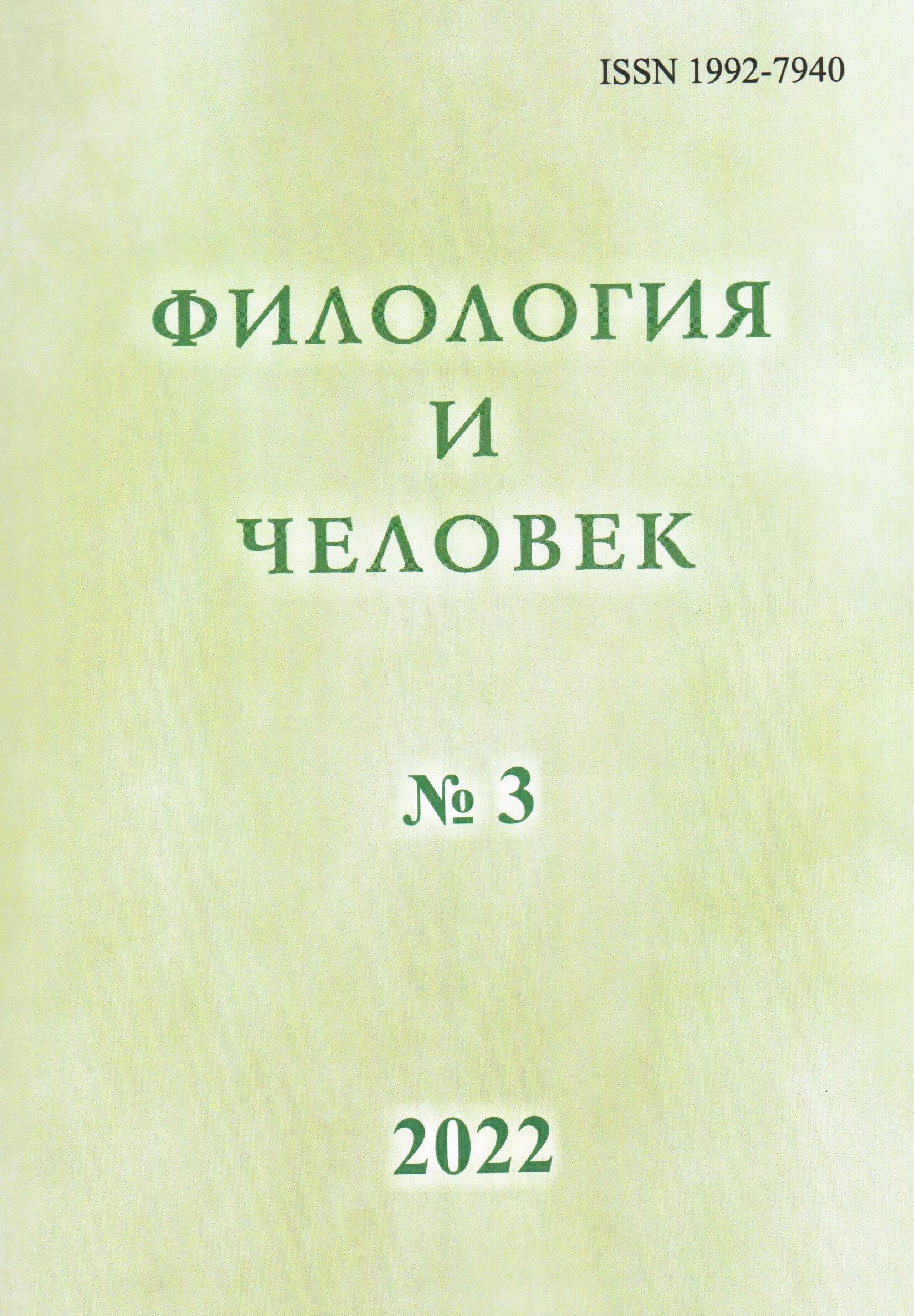Diminutives in the Translation of Film Speech of Characters in Children’s Animated Films
Abstract
Diminutive forms of the Russian language are considered by the author of the article from the perspective of their functional-semantic syncretism and communicative-pragmatic potential, manifested in everyday communication with children in the Russian-speaking environment and in the film speech of characters in children’s animated films. The tendency of the prevalence of diminutive forms in Russian-language translations of children's animated films over those in the English-language originals, discovered by the author, is qualified by the author as a translation strategy of emotive replacement. Emotive replacement allows one to solve a number of translation tasks during the process of children’s films localization. These are: stylization of film speech in translation and lending the dialogues of film characters a child-centric coloring, expressivization of film speech through imparting additional effects of irony, appraisal, implicit aggression and jesting.
Downloads
Metrics
References
Ахманова О.С. Словарь лингвистических терминов. М., 2004.
Бархударов Л.С. Язык и перевод (Вопросы общей и частной теории перевода). М., 1975.
Белова А.С. Английские диминутивные суффиксы -ie, -y, -ish и русские уменьшительно-ласкательные суффиксы c точки зрения перевода // В многомерном пространстве современной лингвистики. Москва, 2021. [Электронный ресурс]. URL: https://elibrary.ru/item.asp?id=46218793.
Васильева А.В. Когнитивная обработка диминутивов носителями русского языка как родного и тюркско-русскими билингвами: дисс. … канд. филол. наук. Томск, 2020.
Каменская Ю.В. Ирония как компонент идиостиля А.П. Чехова: дис… канд. филол. наук. Саратов, 2001.
Коржовник Ю.А. Речежанровые особенности детского анимационного кинотекста // Художественное произведение в современной культуре: творчество – исполнительство – гуманитарное знание. Челябинск, 2020. [Электронный ресурс]. URL: https://elibrary.ru/item.asp?id=43778507.
Кузнецова Э.В. Лексикология русского языка. М., 1989.
Лисса З. Эстетика киномузыки. М., 1970. [Электронный ресурс]. URL: http://www.etnolog.org.ua/pdf/e-biblioteka/mystectv/kino/lissa_zofya_estetika_kinomuzyki.pdf.
Менькова Н.В. Диминутивы как речевая неудача // Верхневолжский филологический вестник. 2018. № 4 (15). [Электронный ресурс]. URL: https://vv.yspu.org/wp-content/uploads/sites/4/2018/12/VFV-4-2018.pdf.
Некрасова И.М. Категория диминутивности в русском и английском языках // Проблемы романо-германской филологии, педагогики и методики преподавания иностранных языков. 2010. №8. [Электронный ресурс]. URL: https://cyberleninka.ru/article/n/kategoriya-diminutivnosti-v-russkom-i-angliyskom-yazykah.
Резанова З.И. Субъективные образы времени в современных славянских языках: диминутивные модели // Сибирский филологический журнал. 2017. №3. [Электронный ресурс]. URL: https://cyberleninka.ru/article/n/subektivnye-obrazy-vremeni-v-sovremennyh-slavyanskih-yazykah-diminutivnye-modeli.
Стернин И.А. Лексическое значение слова в речи. Воронеж, 1985.
Уланович О.И., Кот М.В. Инструменты стилизации и маркеры прагматики кинодиалога современного кино // Художественное произведение в современной культуре: творчество – исполнительство – гуманитарное знание. Челябинск, 2020. [Электронный ресурс]. URL: https://elibrary.ru/item.asp?id=43778515.
Редакционная коллегия научного журнала «Филология и человек» придерживается принятых международным сообществом принципов публикационной этики, отраженных, в частности, в рекомендациях Комитета по этике научных публикаций (Committee on Publication Ethics (COPE), Кодекс этики научных публикаций), а также учитываeт ценный опыт авторитетных международных журналов и издательств.
Во избежание недобросовестной практики в публикационной деятельности (плагиат, изложение недостоверных сведений и др.), в целях обеспечения высокого качества научных публикаций, признания общественностью полученных автором научных результатов каждый член редакционной коллегии, автор, рецензент, издатель, а также учреждения, участвующие в издательском процессе, обязаны соблюдать этические стандарты, нормы и правила и принимать все разумные меры для предотвращения их нарушений. Соблюдение правил этики научных публикаций всеми участниками этого процесса способствует обеспечению прав авторов на интеллектуальную собственность, повышению качества издания и исключению возможности неправомерного использования авторских материалов в интересах отдельных лиц.





